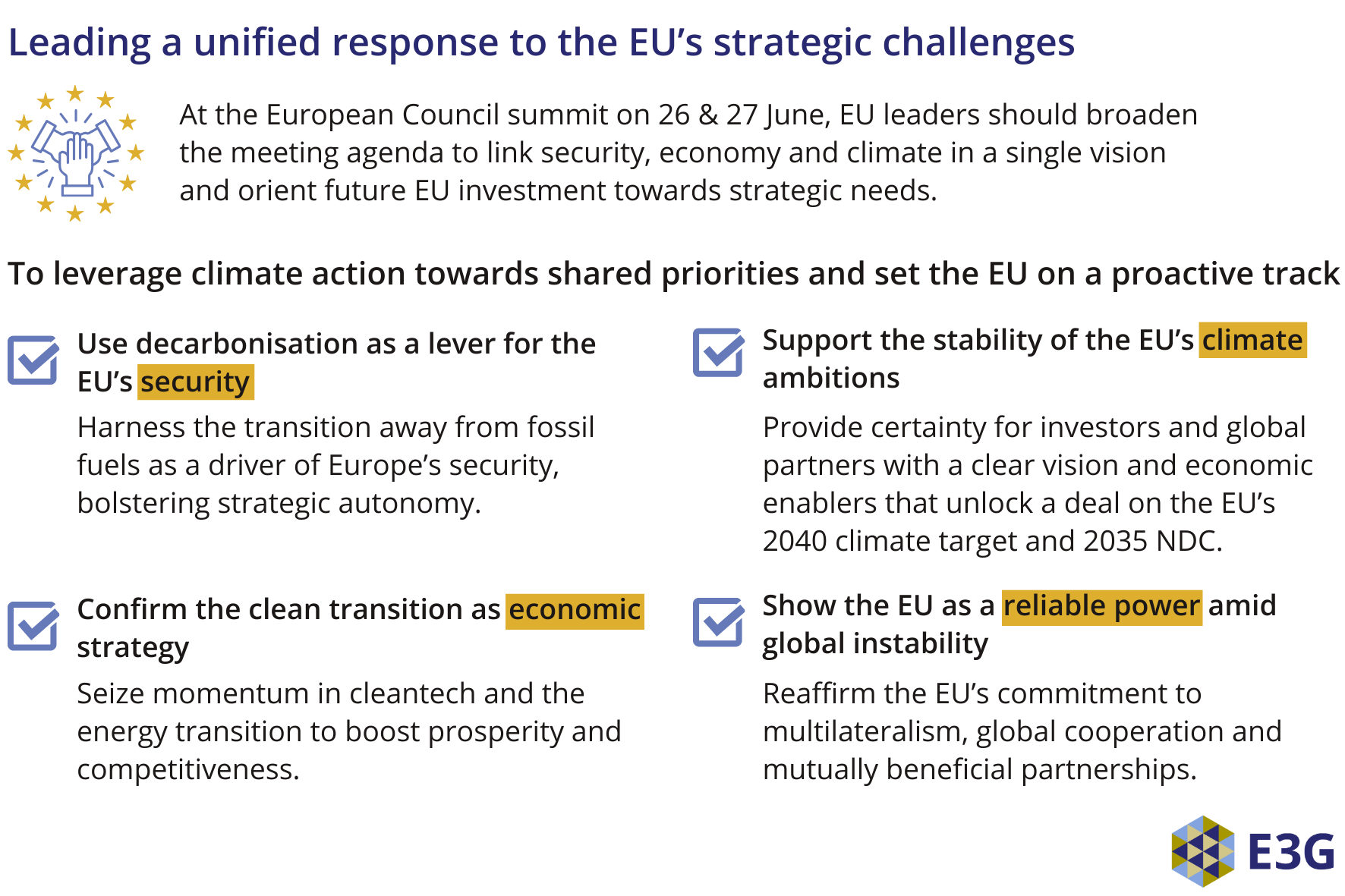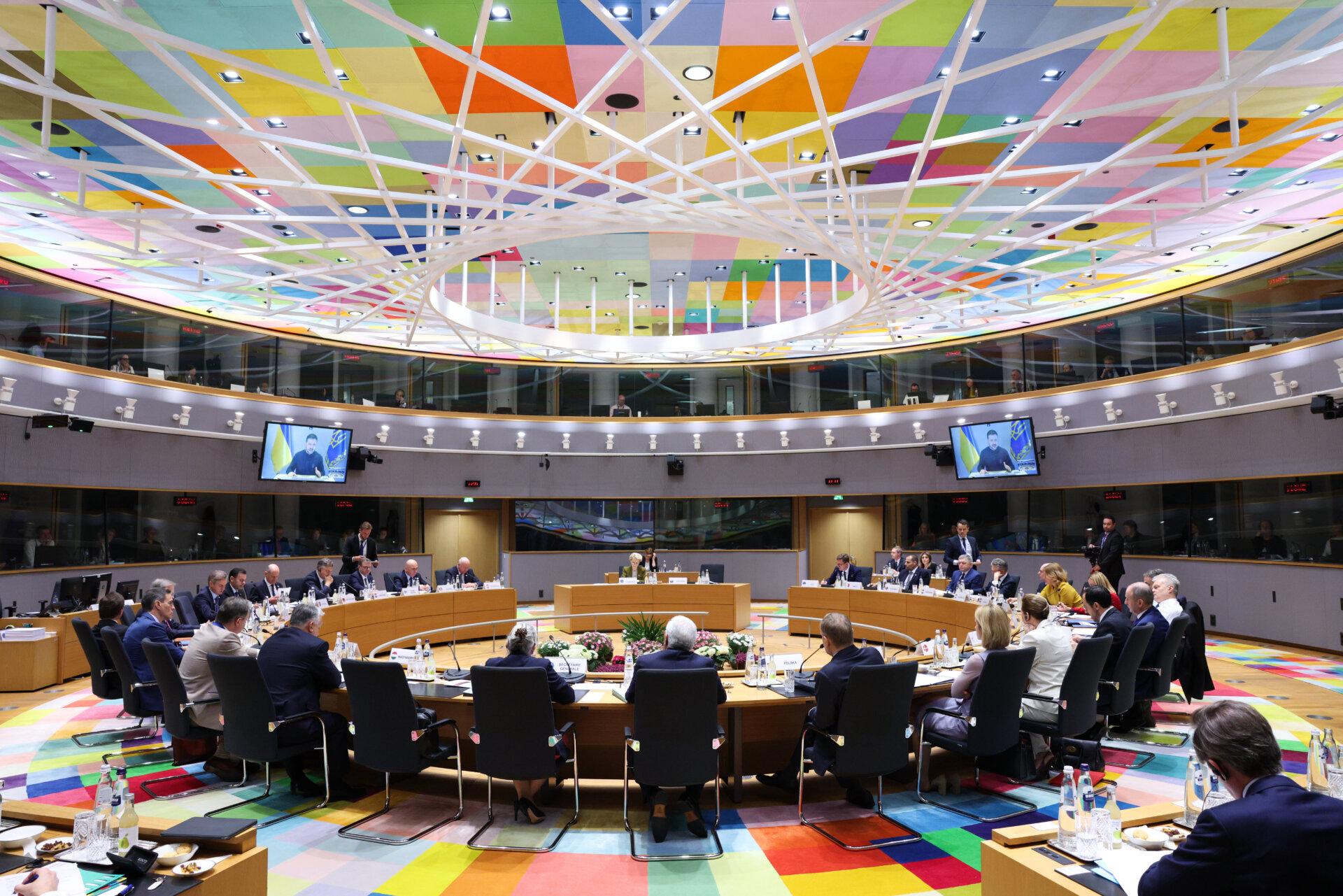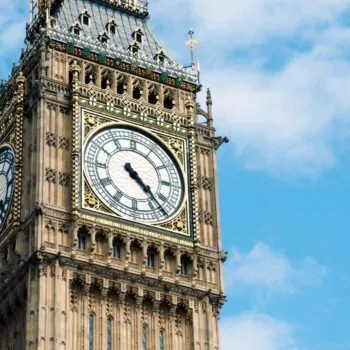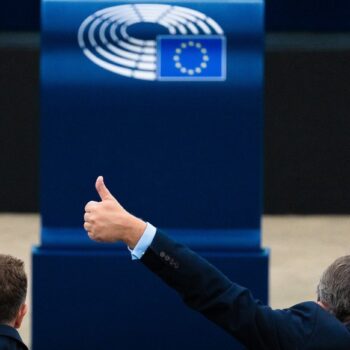EU leaders will meet on 26–27 June for a crucial summit that will determine Europe’s approach to an increasingly challenging geopolitical and geoeconomic context. They can lead the EU to strategic autonomy by steering comprehensive efforts across the intertwined challenges of security, defence, competitiveness, and decarbonisation. The little progress on the climate agenda so far can be remedied with the speedy proposal for a strong 2040 target paired with leaders’ commitment to green industrial competitiveness, a winding down of fossil fuel dependency, and a plan to forge stable new international partnerships.
Climate action is at the heart of addressing the EU’s current challenges
A year after European leaders adopted the EU’s Strategic Agenda, the upcoming June European Council (EUCO) is a key opportunity to map Europe’s path amid sustained turmoil and uncertainty. A lot has happened in that year. Crucially, the global order that existed at the time is no longer a given, with the US administration changing direction on key issues such as Ukraine, global trade, and climate. These developments are driving an increasingly urgent debate on how Europe can establish its own strategic autonomy and help rebuild international stability.
In an era of rising geopolitical fragmentation, economic volatility and accelerating climate impacts, Europe faces a critical choice: retreat into defensive strategies or build resilience and security. Climate lies at the heart of the matter. Decarbonisation – in addition to addressing the existential threat of climate change – offers the most viable pathway to securely meet domestic energy demand, structurally reduce energy costs, and simultaneously channel finance into technological capability and innovation.
Until now, EU leaders have adopted a somewhat reactive approach – weakening green legislation despite calls from investors, businesses, and civil society to maintain ambition. Yet in 2023, just under 30% of the EU’s GDP growth came from clean economy sectors. To establish strategic autonomy on a stable economic foundation, EU leaders can seize the momentum in the energy transition to boost competitiveness while reducing foreign dependencies. A comprehensive security strategy encompassing the intertwined issues of defence, competitiveness, and decarbonisation can set the path forward and clarify spending priorities ahead of upcoming budget negotiations.
Showcasing the EU’s continued commitment to climate action is also valuable on the international stage – not only for strengthening cooperation with other global emitters but also to signal regulatory stability and a forward-looking agenda to international partners and investors. As outlined in the Clean Industrial Deal communication, climate action is still the best means to strengthen the EU’s security and competitiveness. Yet, the EU is lagging in progressing its climate agenda: the bloc is now one year behind in presenting its legislative proposal for a 2040 climate target, as set by the European Climate Law, and risks missing the deadline for including an updated Nationally Determined Contribution (NDC) in the annual NDC synthesis report this September.
Europe can grasp this disruptive moment to become proactive: provide regulatory clarity to investors, strengthen the security of European citizens, forge new international cooperation, and future-proof the bloc’s strategy for the unstable new normal ahead.
How leaders can set the EU on a proactive track at the June European Council
The 26–27 June EUCO is a timely moment for EU leaders to set a strategic direction amid a turbulent landscape. Internationally, they can provide clarity and correct mixed signals ahead of the EU–China summit, G7, and UNGA. Domestically, they can signal a coherent security plan, provide certainty to markets, and outline spending priorities ahead of upcoming budget negotiations.

In the upcoming EUCO, EU leaders are likely to place significant attention on security and defence. This is no surprise, given the increasingly volatile security context – including escalating military tensions between nuclear powers India and Pakistan, Israel’s total blockade threatening famine in Gaza, and Russia’s prolonged aggression in Ukraine. As the global rules-based order deteriorates, various EU leaders have pointed to the need for Europe to establish strategic autonomy as a means to lead on rebuilding the international security fabric in the wake of an unpredictable transatlantic power.
Sitting at the core of this strategy is Europe’s energy security and technological capability. As US-led peace talks with Russia explore ways to restore Russian gas flows to Europe, the Commission’s roadmap on exiting Russian energy is a welcome confirmation of the EU’s commitment to phasing out Russian fossil fuels. However, the proposal underestimates the clean transition’s potential to eliminate fossil fuel demand via renewables and energy efficiency, and by extension misses an opportunity to reduce Europe’s proven vulnerability to imported gas – be it from Russia or elsewhere.
Moreover, a beefed-up defence push will depend on critical energy infrastructure, critical raw materials, and innovation in low-carbon technology. EU leaders at the June EUCO can avoid repeating mistakes of the past by acknowledging that security, defence, and decarbonisation are fundamentally intertwined as they shape the EU’s effort to achieve strategic autonomy.
As Council President António Costa said in a recent speech, “what we see today is not just geopolitical disorder. It is also geoeconomic disorder […] economic strength is again inseparable from security”. This reality ushers in the need for the June EUCO to focus not only on security and defence, but also on competitiveness and the economy. This would give leaders an opportunity to shift away from the reactive backtracking that has recently driven reversals of sustainable finance rules and CO2 standards for vehicles. These actions have weakened regulatory certainty and rowed against business interests, with recent polling showing that 97% of global business executives support the transition away from fossil fuels to renewable energy.
Indeed, in a context where trade tensions are creating enormous risks for Europe’s economy, leaders should aim to accelerate the clean transition that is central to the EU’s economic strategy. Support for an ambitious 2040 target can signal a clear pathway forward and trigger enabling dominos. For example, the Clean Industrial Deal’s expansion of green EU lead markets can support domestic industry, while bumping up the affordability of clean technologies and future mechanisms such as ETS2 can reassure more economically exposed member states.
The EU is one year late in presenting its legislative proposal for a 2040 climate target, as set by the European Climate Law. In its Communication in February 2024, the Commission committed to a greenhouse gas emissions reduction target of 90% by 2040, following scientific advice and its own impact assessment. Since then, the Commission has stalled for time and opened the door to flexibility options to meet expectations from member states, instead of waiting for this to naturally happen during trilogue negotiations. As a result, a lot is still at stake, including agreement on the quality of the target; balancing countries’ asks; and finding finance solutions.
The approval of the EU’s 2040 target has crucial repercussions for the adoption of an updated EU Nationally Determined Contribution (NDC), expected in time for the NDC Synthesis Report in September. Failing to reach a timely and ambitious agreement would undermine the EU’s reputation globally and domestically, at a time of high stakes for European leadership. Leaders can use the June EUCO to provide guidance to their environment ministers and overcome the deadlock of these negotiations, so that the target and new EU NDC can be adopted before the summer.
Tariff announcements from US President Trump have exacerbated a rise in protectionism and pushed the EU into a defensive and reactive position. EU leaders can instead use the opportunity to revive cooperation with third countries and become a partner of choice to achieve both competitiveness and geopolitical objectives. Climate action should not be traded off for other priorities, as it is the best means to channel the EU’s efforts to drive progress and deliver on long-term strategic objectives. China is demonstrating this: its clean energy sectors already account for a significant share of national GDP (10%) and GDP growth (26%). The momentum behind clean energy and green technologies presents an unprecedented opportunity for EU leaders to drive economic prosperity and improve strategic autonomy through the energy transition.
By identifying and championing common benefits and interests, the EU can deliver on the global stage while serving its domestic priorities. The announced High-Level Summit with China is a good opportunity to demonstrate climate commitments and leadership, and build confidence in the global clean economy.
What’s next?
In the coming weeks and months, EU climate action will be shaped by critical events and discussions on the EU’s security, investments, and the 2040 climate target – with the June EUCO as a key milestone amid it all.
A series of preparatory meetings culminate in the EU leaders’ European Council summit of 26 and 27 June
EU member states’ heads of state or government will meet on 26 and 27 June in Brussels for the EUCO. They are likely to discuss security, but the agenda and draft conclusions of the summit still need to be prepared in advance by national ministers in charge of EU affairs at the 27 May and 24 June General Affairs Councils, respectively.
The European Commission presents a 2040 target proposal and ministers approve the EU’s 2035 NDC by September
The conclusion of the second round of Polish Presidential elections on 1 June could create the political opening for the Commission to table its 2040 climate target legislative proposal. The Environment Council of ministers on 17 June could then kick-start official discussions on the target and take steps towards adopting a 2035 EU NDC. If conversations linger, the upcoming Danish Presidency of the Council of the EU – taking over from Poland on 1 July – would need to create a belated last chance for ministers to adopt the NDC with an extraordinary meeting by September – the final deadline for inclusion in the NDC Synthesis Report at COP30.
The European Commission proposes the EU’s 2028–2035 multiannual financial framework amid related milestones and initiatives
The Commission is expected to further elaborate on how to finance its recent announcements on defence, competitiveness and clean industry with proposals for a revision of the State Aid Framework on 25 June and the the 2028–2035 multiannual financial framework (MFF) on 16 July. Around that time, the Commission is also expected to put forward a Clean Energy Investment Strategy and a Sustainable Transport Investment Plan. After the MFF proposal, the Council and the Parliament will start developing their respective positions and negotiating – a process that normally takes them well over a year.
EU leaders define a way forward for Europe’s security and international approach through a series of high-level summits
Several high-level events related to the EU’s foreign policy, defence and security in the next month will build momentum ahead of EU leaders’ discussion at the June EUCO. After the EU–UK summit on security cooperation on 19 May, EU ministers of Foreign Affairs will meet first on 26 May and then on 23 June. Some EU leaders will also meet in Canada for the G7 Summit on 15–17 June and most of them will attend the NATO summit on 24–25 June, just before the European Council meeting on the same week. After that, the high-level EU–China summit is expected to take place in the second half of July. All these moments will offer EU leaders the opportunity to recognise the close ties between the EU’s security and clean economy transition, as well as to maintain global confidence in the EU’s commitment to decarbonisation and multilateralism.


